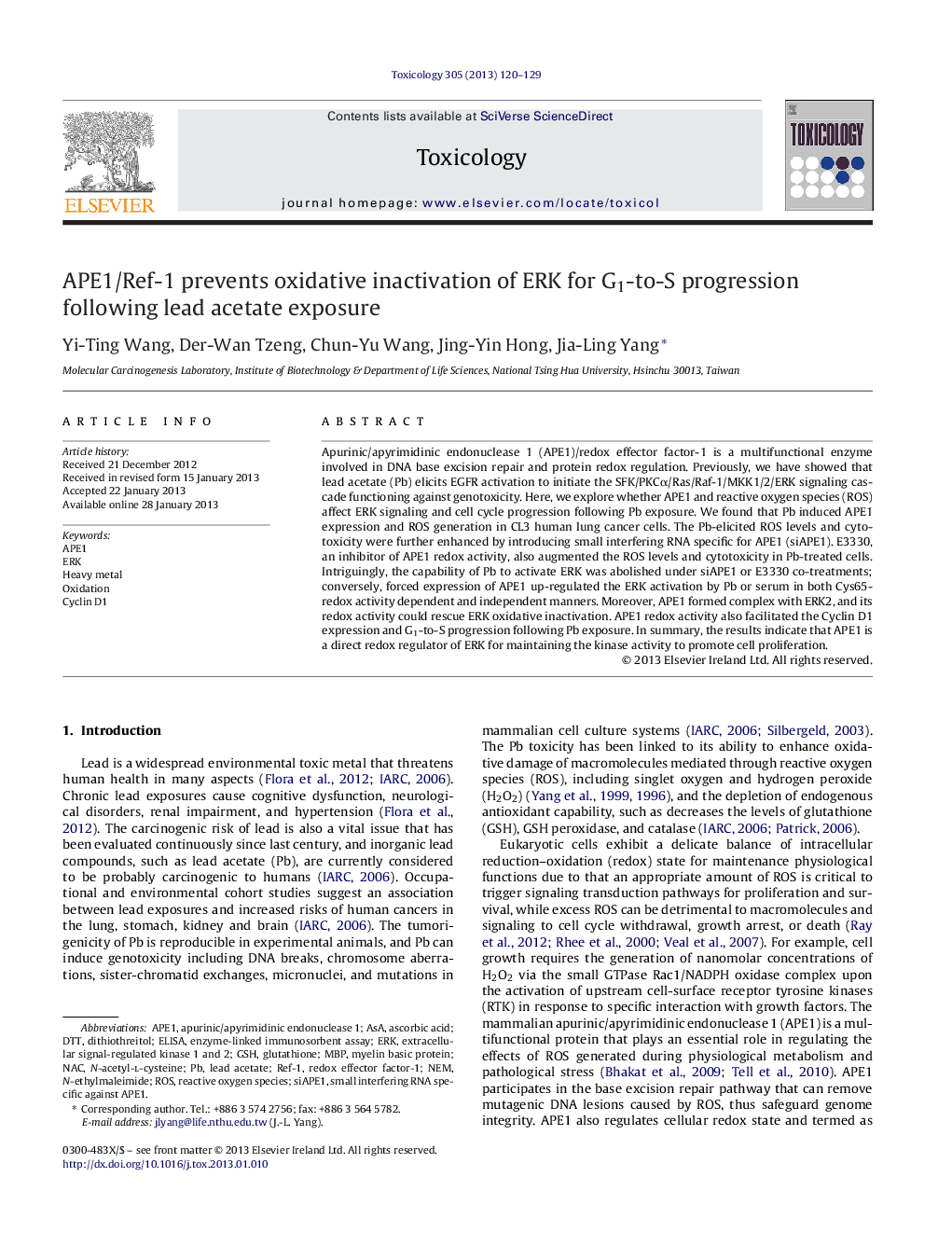| کد مقاله | کد نشریه | سال انتشار | مقاله انگلیسی | نسخه تمام متن |
|---|---|---|---|---|
| 5859532 | 1562351 | 2013 | 10 صفحه PDF | دانلود رایگان |
عنوان انگلیسی مقاله ISI
APE1/Ref-1 prevents oxidative inactivation of ERK for G1-to-S progression following lead acetate exposure
دانلود مقاله + سفارش ترجمه
دانلود مقاله ISI انگلیسی
رایگان برای ایرانیان
کلمات کلیدی
Ref-1APE1Cyclin D1N-acetyl-l-cysteineASAERKNACMBPDTTGSHN-ethylmaleimideapurinic/apyrimidinic endonuclease 1 - apurinic / apyrimidinic endonuclease 1ROS - ROSAscorbic acid - آسکوربیک اسیدLead acetate - استات سربOxidation - اکسیداسیونEnzyme-linked immunosorbent assay - تست الیزاELISA - تست الیزاdithiothreitol - دیتیوتریتولNEM - نهHeavy metal - هوی متال، فلز سنگینMyelin basic protein - پروتئین پایه میلینextracellular signal-regulated kinase 1 and 2 - کیناز 1 و 2 تنظیم شده با سیگنال خارج سلولیGlutathione - گلوتاتیونReactive oxygen species - گونههای فعال اکسیژن
موضوعات مرتبط
علوم زیستی و بیوفناوری
علوم محیط زیست
بهداشت، سم شناسی و جهش زایی
پیش نمایش صفحه اول مقاله

چکیده انگلیسی
Apurinic/apyrimidinic endonuclease 1 (APE1)/redox effector factor-1 is a multifunctional enzyme involved in DNA base excision repair and protein redox regulation. Previously, we have showed that lead acetate (Pb) elicits EGFR activation to initiate the SFK/PKCα/Ras/Raf-1/MKK1/2/ERK signaling cascade functioning against genotoxicity. Here, we explore whether APE1 and reactive oxygen species (ROS) affect ERK signaling and cell cycle progression following Pb exposure. We found that Pb induced APE1 expression and ROS generation in CL3 human lung cancer cells. The Pb-elicited ROS levels and cytotoxicity were further enhanced by introducing small interfering RNA specific for APE1 (siAPE1). E3330, an inhibitor of APE1 redox activity, also augmented the ROS levels and cytotoxicity in Pb-treated cells. Intriguingly, the capability of Pb to activate ERK was abolished under siAPE1 or E3330 co-treatments; conversely, forced expression of APE1 up-regulated the ERK activation by Pb or serum in both Cys65-redox activity dependent and independent manners. Moreover, APE1 formed complex with ERK2, and its redox activity could rescue ERK oxidative inactivation. APE1 redox activity also facilitated the Cyclin D1 expression and G1-to-S progression following Pb exposure. In summary, the results indicate that APE1 is a direct redox regulator of ERK for maintaining the kinase activity to promote cell proliferation.
ناشر
Database: Elsevier - ScienceDirect (ساینس دایرکت)
Journal: Toxicology - Volume 305, 8 March 2013, Pages 120-129
Journal: Toxicology - Volume 305, 8 March 2013, Pages 120-129
نویسندگان
Yi-Ting Wang, Der-Wan Tzeng, Chun-Yu Wang, Jing-Yin Hong, Jia-Ling Yang,